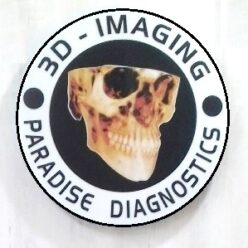CBCT stands for Cone Beam Computed Tomography. It is a medical imaging technique that uses a cone-shaped X-ray beam to create detailed three-dimensional images of the inside of an object, such as the human body. CBCT is particularly used in dental and maxillofacial imaging, providing high-resolution images of the teeth, jaw, and surrounding structures.
CBCT is different from traditional medical CT (Computed Tomography) scanning in terms of the cone-shaped beam, which allows for a focused and more precise imaging of a specific area. This technique is valuable in dentistry for various applications, including:
Dental Implant Planning: CBCT helps dentists visualize the bone structure and determine the optimal locations for dental implant placement.
Orthodontic Treatment: Orthodontists use CBCT to assess the position of teeth, the jaw, and the overall facial structure for treatment planning.
Endodontic Diagnosis: CBCT can aid in the diagnosis and treatment planning for root canal procedures by providing detailed images of the tooth and its surrounding structures.
Temporomandibular Joint (TMJ) Evaluation: CBCT is used to assess the temporomandibular joint for disorders or abnormalities.
Maxillofacial Surgery: Surgeons use CBCT images for pre-surgical planning in procedures such as jaw surgeries and facial reconstructions.
While CBCT provides valuable information, it also exposes the patient to a higher dose of radiation compared to traditional dental X-rays. Therefore, its use is typically justified based on the specific diagnostic needs of the patient and the potential benefits of the detailed three-dimensional imaging it provides.
